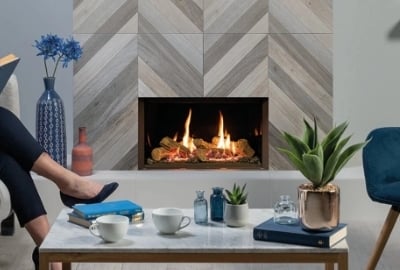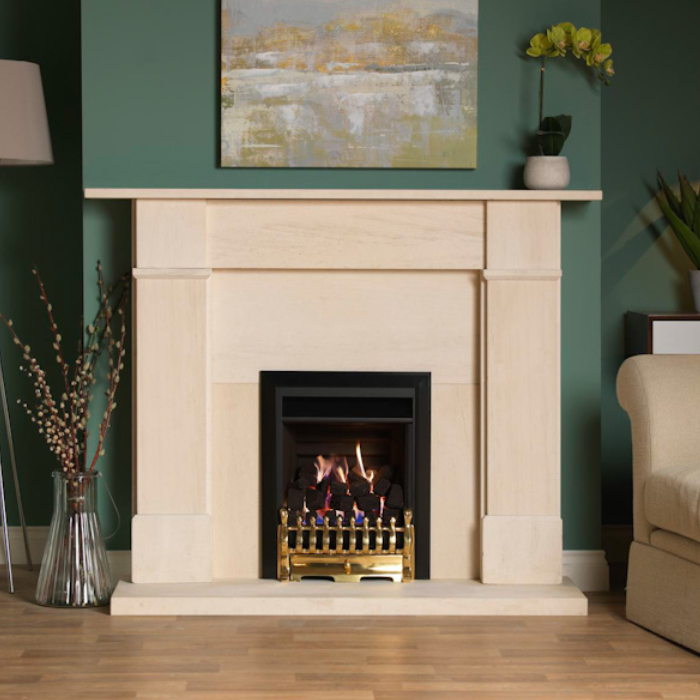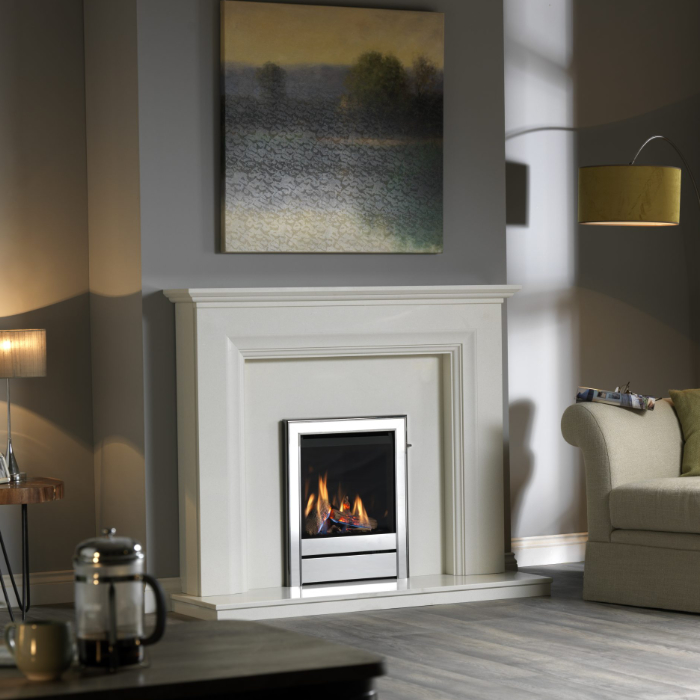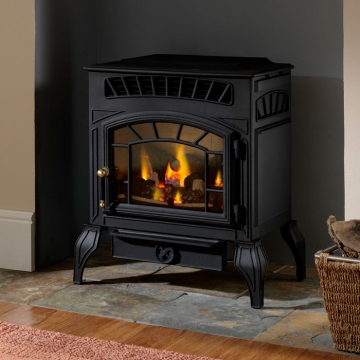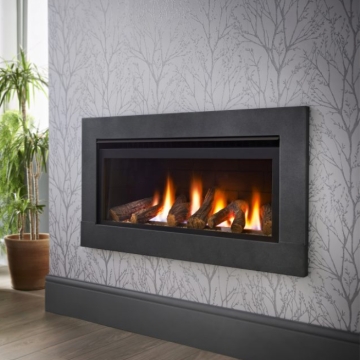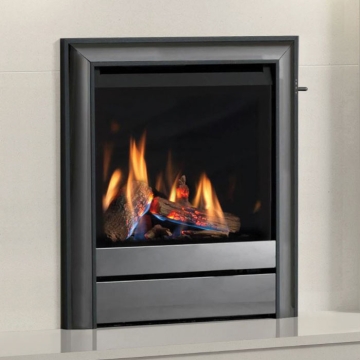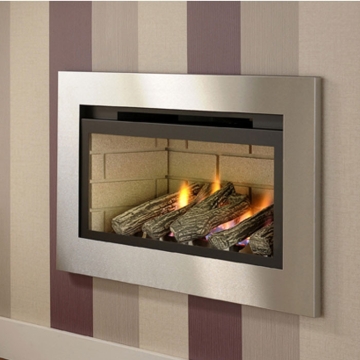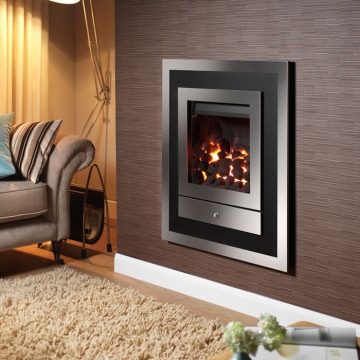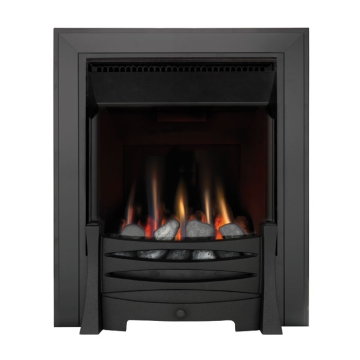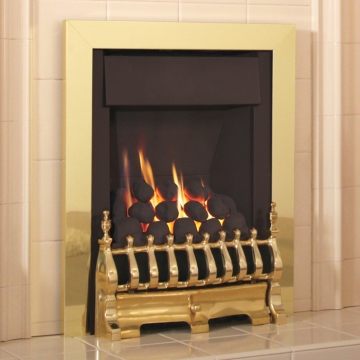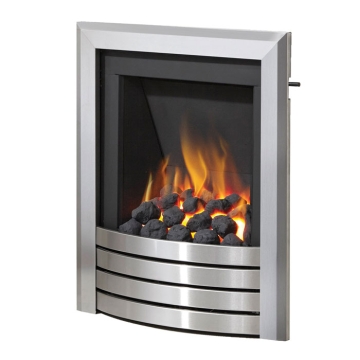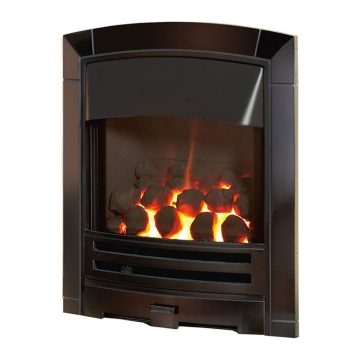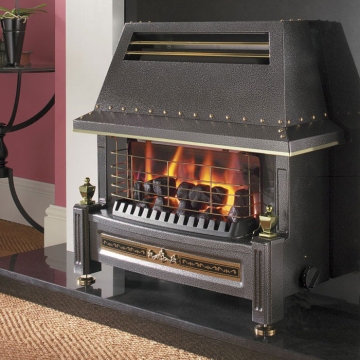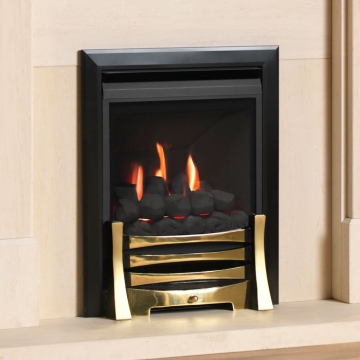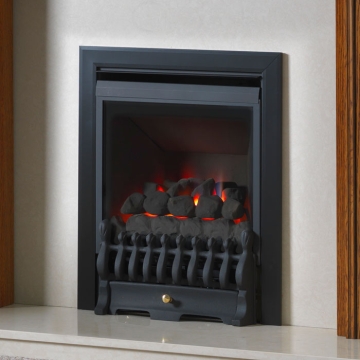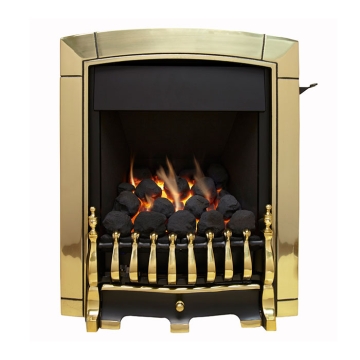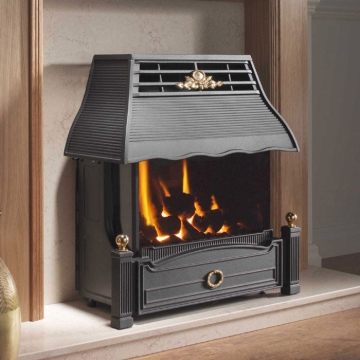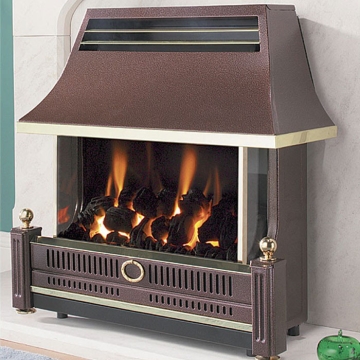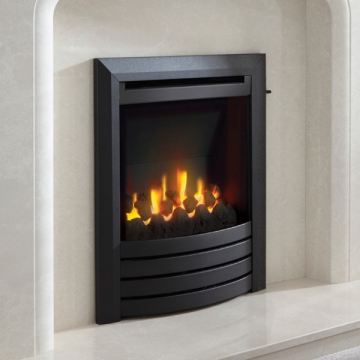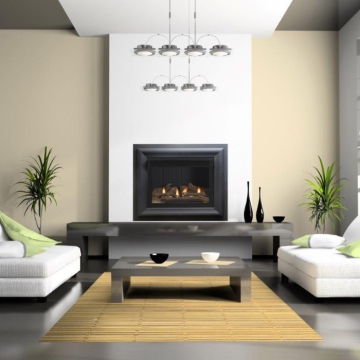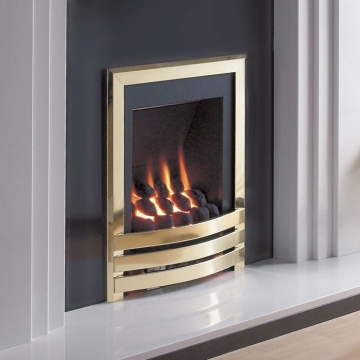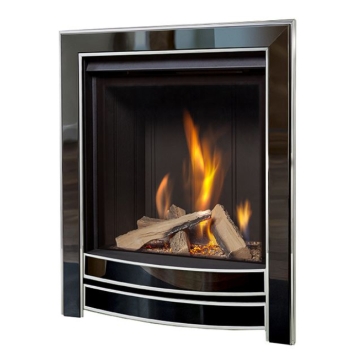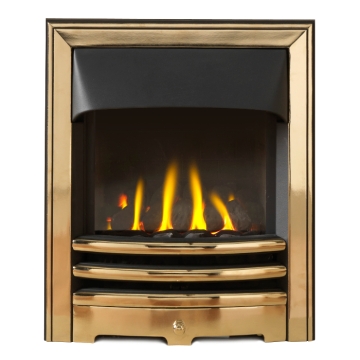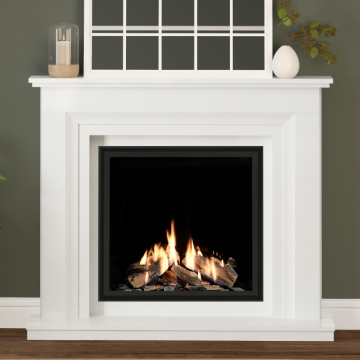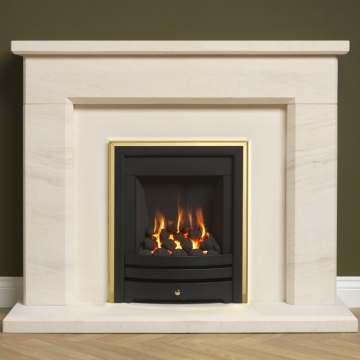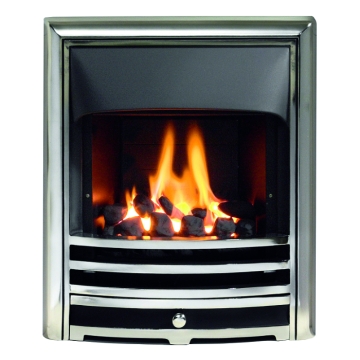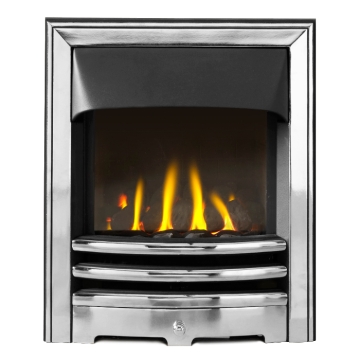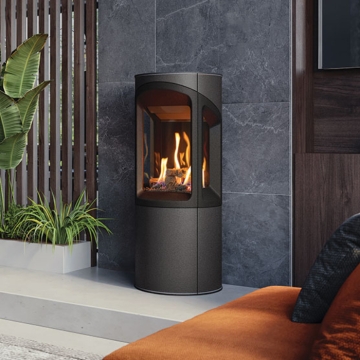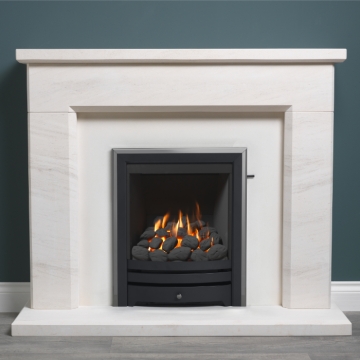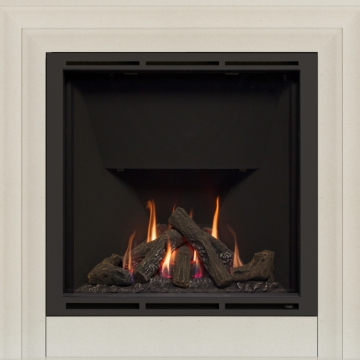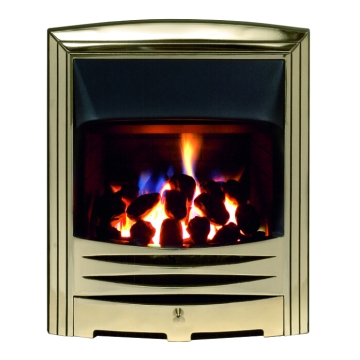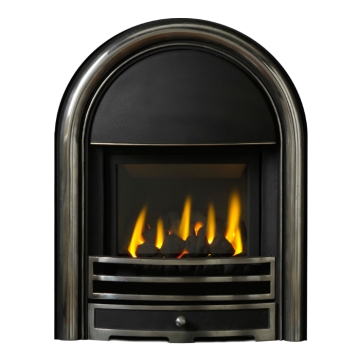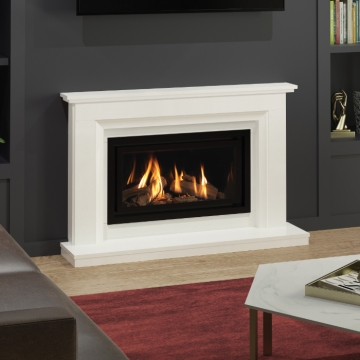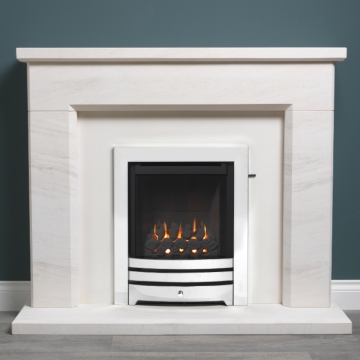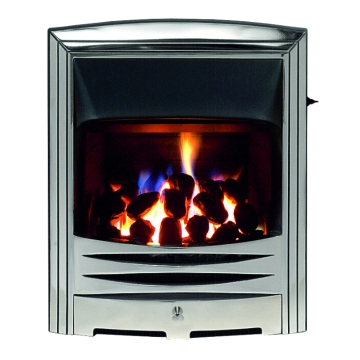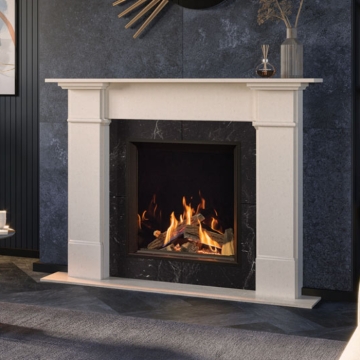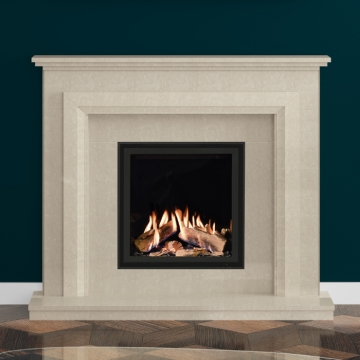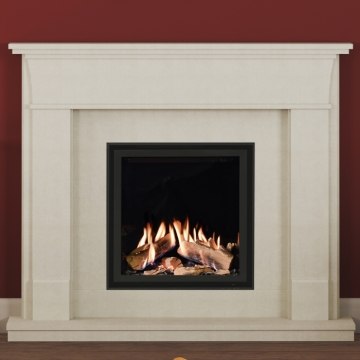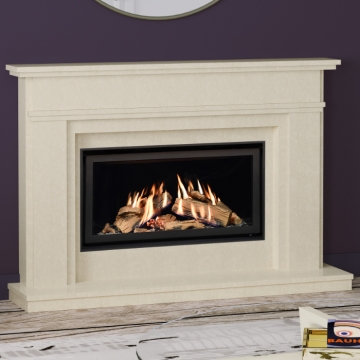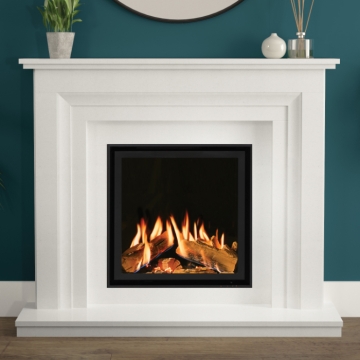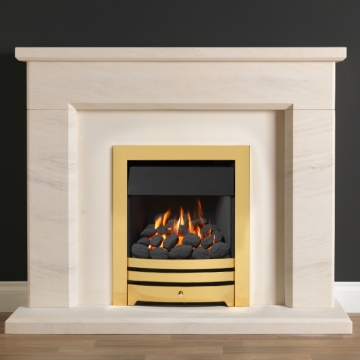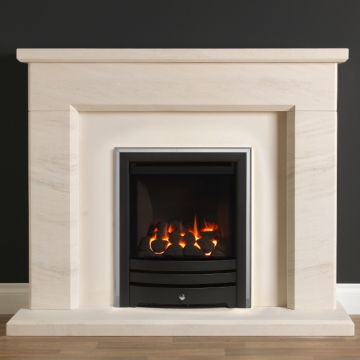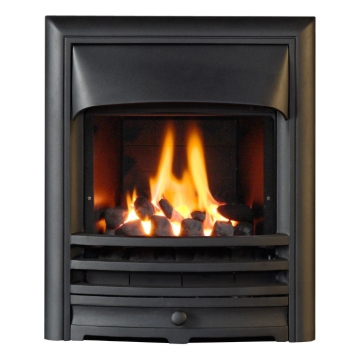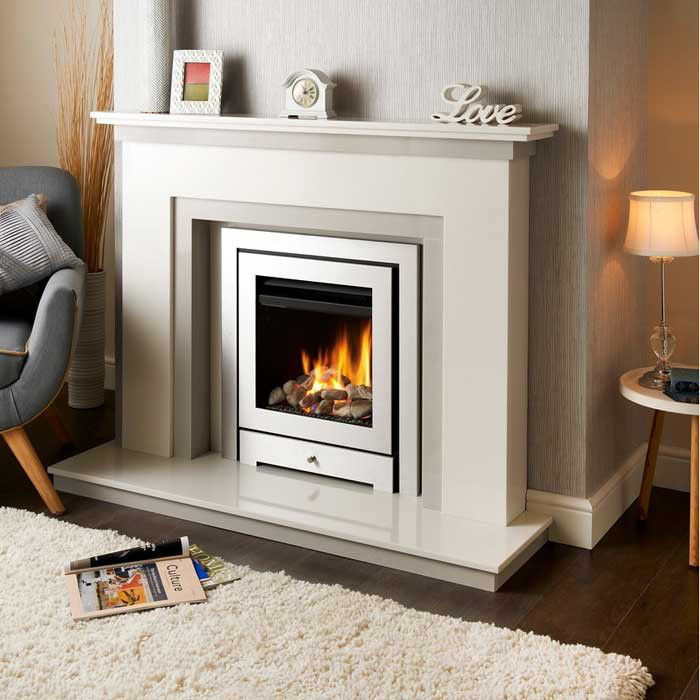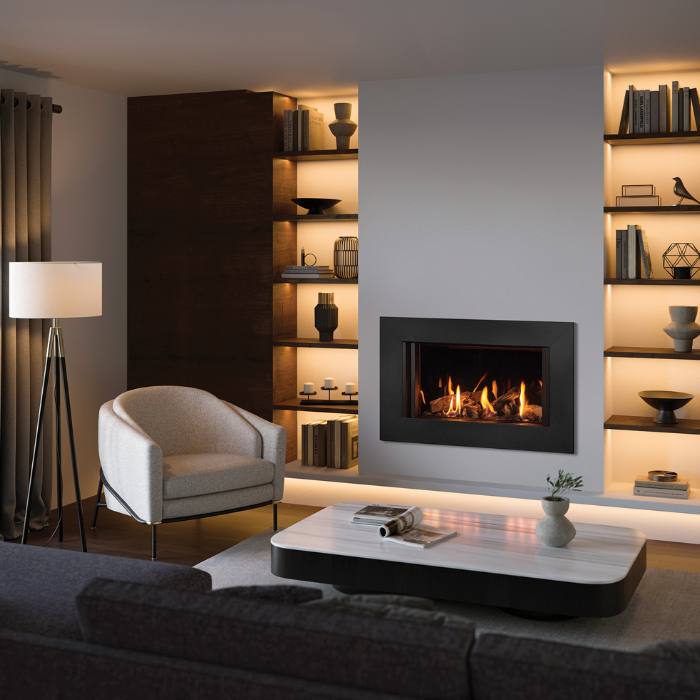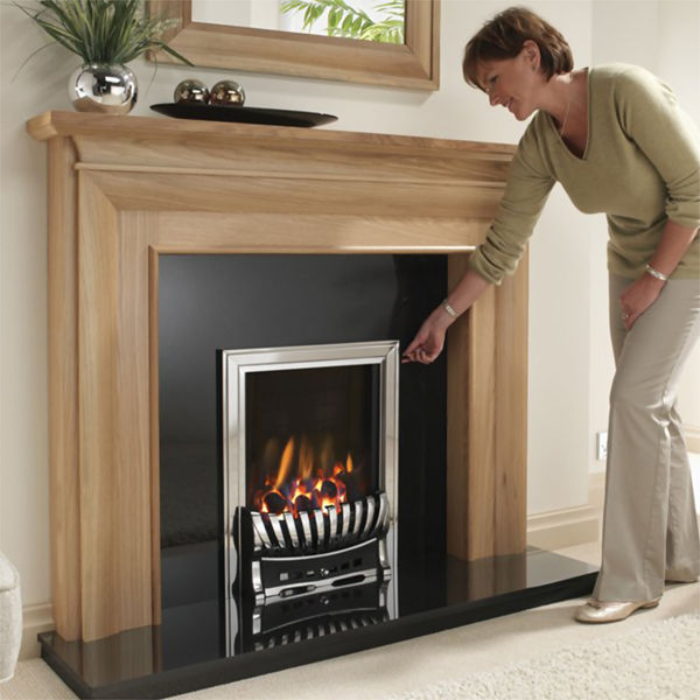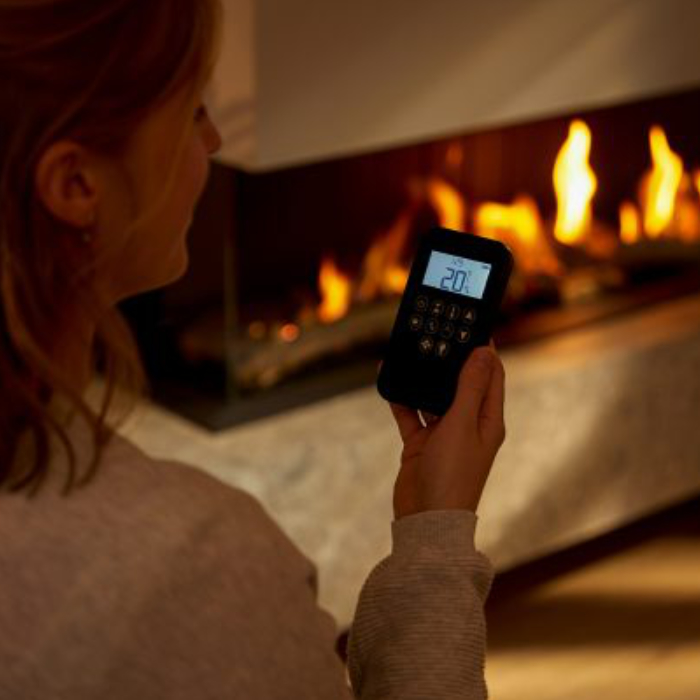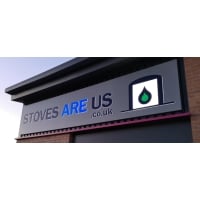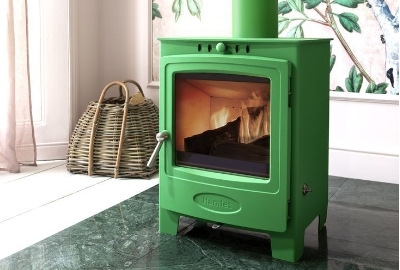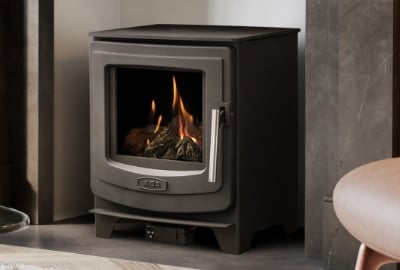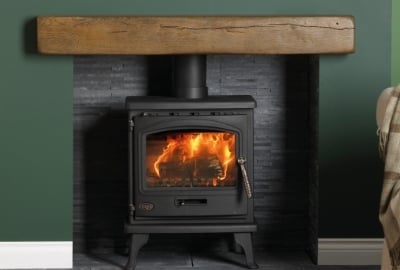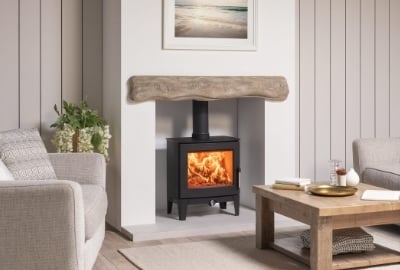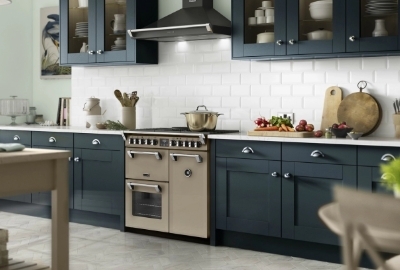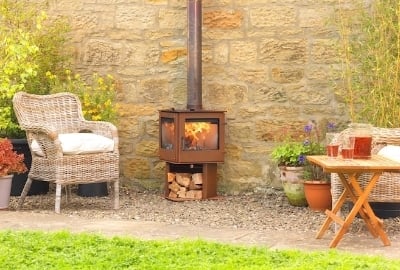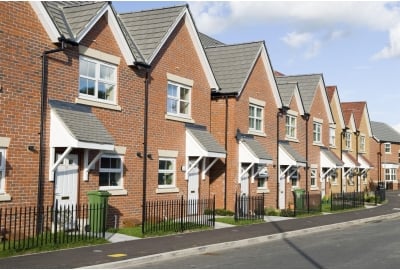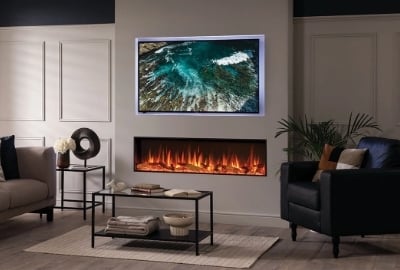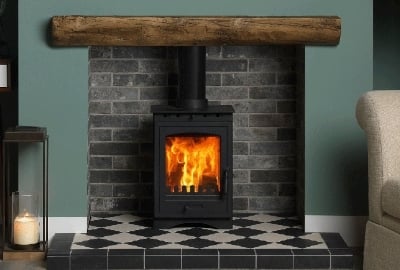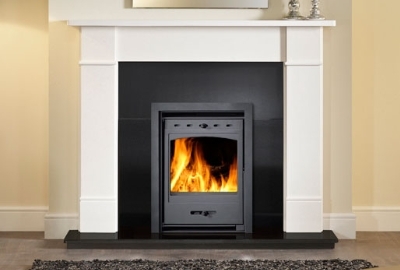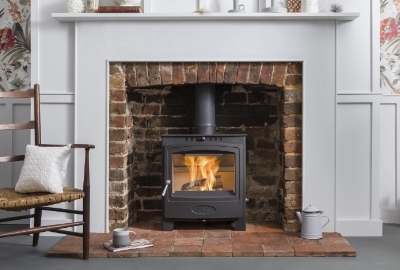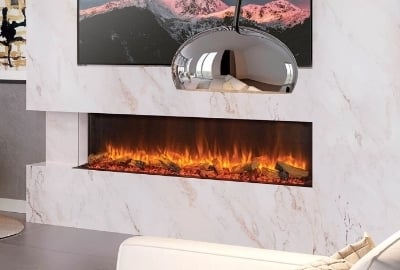If you’re considering buying a gas fire then this handy guide is a perfect bit of reading to help you choose the ideal gas fire for your home. Gas fires offer a fast, efficient and convenient way to provide your home with the essential heat you’ll need during the cold season and we’re here to help you choose one. In this edit, we’ll cover important topics like the different types of flue and how to identify them, which gas fire might be most suitable for your home and best practices for choosing an installer.
Contents
Why should I consider buying a gas fire?
What are the different types of gas fire?
What heat output does my gas fire need?
Open fronted or glass fronted gas fire which is best?
Essential gas fire features & functions to watch out for
Full-depth vs slimline gas fires
What are the benefits of a gas fireplace
Who should install a gas fire?
Why should I consider buying a gas fire?
Gas fires and gas powered stoves are the ultimate balance of authenticity and convenience, they produce a real flame that works alongside the ease of a piezo ignition, slide control or remote control handset. We supply some of the best gas fires from industry-leading brands like Gazco, Onyx, Crystal Fires, Elgin and Hall and more. These gas fires are designed with the very latest technologies and are available in traditional and contemporary styles with popular colour options like chrome, brass or black. Built-in and freestanding gas fires feature extremely realistic fuel beds with carefully positioned burner jets that help to create an incredible flame effect that looks like a real log burner. There are lots of different gas fires that allow you to use an existing chimney for installation, other models such as balanced flue and flueless fires can be installed in homes without a chimney in a similar way to a gas boiler. It may surprise you that even homes without a main natural gas supply can enjoy a gas fire or gas fireplace thanks to the range of LPG models we have available.
What are the different types of gas fire?
There is a wide range of different types of gas fire available in the market, in this section, we’ll give you a brief overview and description of each type of gas fire and highlight their uses and how they work. By choosing a gas fire that best suits your home you’ll ensure to get the best heat and efficiency from the heating appliance.
-
Conventional flue gas fires - These gas fires rely on the traditional method of heating by utilising the natural circulation of heated air to expel the products of combustion up your chimney. Conventional flue gas fires can work with open or glass fronts and are manufactured in standard sizes that commonly come in brass, chrome and black finishes.
-
High-efficiency gas fires - Both outset and inset models are available as high-efficiency (HE) gas fires. These types of gas fires can boast efficiency ratings upwards of 90% which means only 10% or less of the gas energy is wasted. High efficiency gas fires are glass fronted helping the fire retain heat, they are more efficient than older gas fire models, and can help reduce your carbon footprint and heating costs.
-
Built-in gas fires - These gas fires are known as hole in the wall and wall-mounted gas fires, they present a modern floating aesthetic. Hole in the wall gas fires are becoming increasingly popular, especially in smaller living spaces and apartments due to their sleek design and small space footprint. There is a wide range of styles and sizes available and one of the many benefits to a built-in gas fire is that it can be installed in the home without needing a hearth, whilst producing lots of heat to your room.
-
Outset gas fires - Outset gas fires are incredibly efficient, they sit in front of your fireplace on a hearth allowing lots of heat to be released into your living space. Outset gas fires are very traditional in design and come with either radiant bars or a living flame effect.
-
Balanced flue gas fires - These gas heaters do not require I chimney and are fuel efficient and energy efficient. A balanced flue gas fire can be an incredibly versatile option for a fireplace and can be fitted on almost any external wall within a home. Instead of using a traditional chimney, these fires are connected to a balanced flue pipe placed horizontally through the wall. This balanced flue expels unwanted fumes and draws in fresh air to feed to flames, simultaneously.
-
Flueless gas fires - Flueless gas fires burn incredibly cleanly, they are A-rated for energy and are 100% efficient. Using a catalytic converter they turn carbon monoxide into harmless carbon dioxide and water vapour. These fires are a fantastic option if you do not have a chimney within the home but require an additional heating appliance.
-
Gas fireplaces - These models include the gas fire, fireplace surround and hearth and can look truly stunning in lots of different settings. Complete gas fireplace suites can be expensive as they include everything you’ll need. We've put together a great selection of gas fire packages below to help you choose the perfect gas fireplace for your home.
What heat output does my gas fire need?
Your modern gas fire or stove should be able to easily heat the room it’s installed in so to get the best value out of it, you should ensure you choose a gas fire that has the right output for your room. You’ll need a gas fire that can adequately heat the room taking into account how well insulated it is, but if it is too powerful, you’ll have to run it at a low temperature which can be inefficient. The output of each gas fire is measured in kilowatts (kW) and on each product page on our website you’ll find a handy heat output calculator to ensure you pick the correct size gas fire.
Room size and insulation Heat output
Average-sized room (4m x 5m) with central heating 3–5 kW
Average-sized living room in a well-insulated house 3–4 kW
Room with poor insulation Divide the room's cubic measurement by 10 to get the correct kilowatt measurement
Room with good insulation Divide the room's cubic measurement by 25 to get the correct kilowatt measurement
Open fronted or glass fronted gas fire which is best?
When buying a gas fire you’ll have the choice of either glass-fronted or open-front. Glass-fronted models have a fixed piece of glass that sits in front of the flames, they are more efficient because more of the heat is pushed through the glass panel via radiation and less heat is lost up the chimney. Although less efficient an open-fronted fire can have a more realistic appearance as you won’t encounter reflections against the glass. Open-fronted gas fires are generally cheaper to buy upfront too which can be a bonus.
Essential gas fire features & functions to watch out for
There are several features to look out for when buying your gas fire or stove, we’ve highlighted the main ones you should look out for below.
-
Operation & controls: Remote controls or easy-access control panels (on the top or side of the appliance). Both will save you from constantly bending down to adjust the heat, so would be particularly helpful if you have limited mobility. Recent models also include a thermostat function which will help you to control the room temperature more efficiently.
-
Fuel bed design: There are lots of different fuel bed options including logs, coals or stones and pebbles. A realistic gas fire will have a well designed fuel bed where the flames shoot through gaps in the fuel bed enhancing the visual appearance of the fire. Lots of gas fires allow you to customise the fuel bed so you choose one that best suits your requirements.
-
Oxygen depletion sensors: This sensor is designed to automatically turn off the gas supply if oxygen levels drop. This stops the fire from producing dangerous levels of carbon monoxide.
-
Flame supervision device: A gas fire with a flame supervision device (FSD) protects against the dangers of gas. This type of device is designed to detect if the flame is unexpectedly extinguished, it will immediately cut the gas supply to the fire off making a fire with this function much safer.
-
Service indicators: Some advanced gas fire models include indicators that will notify you when a service check is due. Like any other gas appliance, regularly servicing your gas fire is crucial for its longevity and safety.
Full-depth vs slimline gas fires
The space available within your fireplace opening can significantly impact your choice of gas fire and deciding on whether you need a full-depth or slimline fire isn't just about aesthetics. A full-depth gas fire has a more traditional appearance and they can look more realistic than their slimline counterparts, they create a pronounced presence in a room replicating the feel of a real fire. Another advantage of a full-depth gas fire is that it tends to offer a higher heat output due to the increased size of the gas burner. This makes full depth gas fires perfect for larger rooms or spaces that need extra warmth. Both full depth and slimline gas fires will typically fit with a traditional fireplace back panel or opening that measures 16” wide by 22” high.
Slimline gas fires often feature a sleek design with a modern aesthetic, they sit almost flush with the wall making them ideal for modern homes or rooms with limited space. If your home doesn’t have a traditional chimney breast then a slimline gas fire might be your answer as they’re more suited to prefabricated and pre-cast flues because they're designed to fit into shallow recesses. Modern slimline gas fires are designed with efficiency in mind, and you can find plenty of high-efficiency models which provide you with plenty of warmth without the increased depth.
If you don’t have a chimney or flue in your home then an electric fire is an excellent room heater to consider. Our modern designs offer some of the best flame effects on the market coming as close to replicating a real flame as possible.
What are the benefits of a gas fireplace?
Gas fires and gas fireplaces offer some incredible benefits and if you love getting cosy then the convenient instant heat of a gas fire can make the cold season an enjoyable time of year.
-
Powerful heat output: The most powerful gas fires can boast heat outputs in excess of 6kW which is three times the output of an electric fire (electric fires average 2kW of heat). This can make a gas fire a fantastic option for rooms of all sizes including large open plan spaces.
-
Realistic flame effect: Gas fires produce a real flame and look as close to a real log burner as you can get, they also feature realistic fuel effects including log and coal options. In short, a gas fire could be a great choice for you if you want genuine-looking flames and cost-effective heat.
-
Cheap running costs: Did you know that the cost of gas is less per kWh than heating oil and electricity and in some cases burning wood and mineral fuels? This makes a gas for the go to heating appliance for consumers wanting to reduce their heating bills.
-
Easy to control: Gas fires produce heat at the flick of a switch or remote control, they allow you to operate everything from ignition to flame height at the touch of a button. Programmable remotes offer the additional benefit of a programmable timer and thermostatic controls, so if you choose to set it before you return home your house will be both warm and welcoming.
-
Safety comes first: Oxygen depletion sensors are designed to automatically switch off the gas supply if oxygen levels drop, to avoid producing dangerous levels of carbon monoxide.
Who should install a gas fire?
If you are looking to buy a new gas fire, then the installation work should only be carried out by a competent Gas Safe registered engineer. A Gas Safe installer will also be best suited to advise on which gas fire is the most suitable type for your home. When choosing a gas fire your installer can help you establish the type of chimney or flue that you have. Your flue/chimney will be one of three different types and the best way to identify your flue type is by taking a look at your roof to inspect the terminal. The types of chimneys in the UK are Class 1 masonry chimney, Class 2 pre-fabricated flue & Class 2 pre-cast flue. For more information on flues and chimney types, you can read our complete and more detailed guide on the different types of chimneys.

